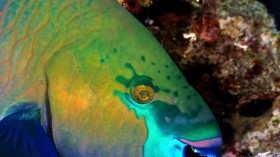Recent media reports have reported that gel manicures - used to prevent nail from chipping - can lead to cancer. However, according to this article from American Council on Science and Health, the reports that link gel manicures with cancer may be slightly overblown.
The story about gel manicures raising risk of skin cancer came from this article from the American Academy of Dermatology which cautioned against their use, as the regular procedure may hide any underlying skin disease like an infection or tumor and because it is difficult to get the nail polish off. Also, the exposure to UV light may increase cancer risk in some women.
"In general, any manicure left in place for an extended period of time is not a good idea because you are not seeing what is going on underneath the nail polish. As is the case with most things, moderation is the key when it comes to gel manicures. If you get them regularly, you need to be aware of the possible consequences and see a board-certified dermatologist if a persistent nail problem develops," said Chris Adigun from New York University School of Medicine in New York, N.Y., in the article from American Academy of Dermatology.
According to an article from JAMA, two women in 2009 were reported to have developed skin cancer despite not having any history of skin cancer in the family. Both women had reported use of UV lights at salons where they had got manicures done.
Although experts at American Council on Science and Health say that UV light exposure (from sunlight or tanning beds, lamps) has been related to skin cancer development, the exposure from UV lamps used at salons for gel manicures may not cause skin cancer.
Tanning beds, lamps and booths are associated with an increased risk of not only deadly skin cancer, but also cancers of the eye.
"While it is true that UV light is a carcinogen - causally related to different types of skin cancer - the amount of exposure in a gel manicure does not seem likely to raise skin cancer risk and the fact that there have only been two cases in the literature suspected to be so linked makes this seem alarmist," said Dr. Gilbert Ross from ACSH.
© 2024 NatureWorldNews.com All rights reserved. Do not reproduce without permission.





